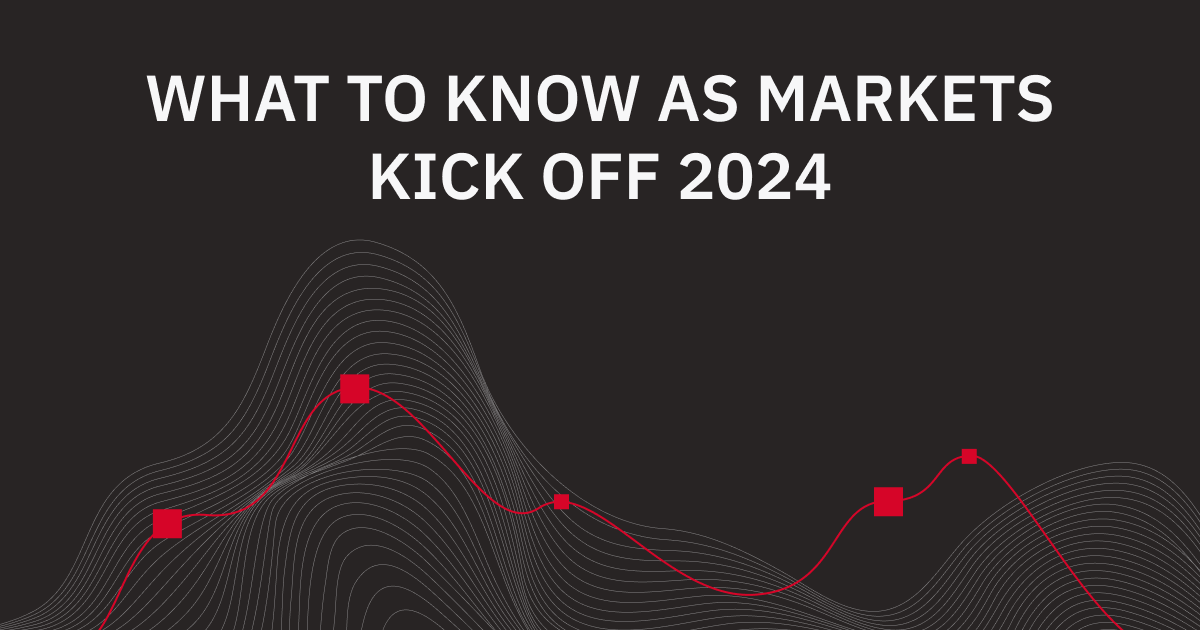Trading Signals 05/02 – 09/02
What to Know as Markets Kick Off 2024

On the first trading day of 2024, European stocks saw active growth, while U.S. futures remained confident, as investors bet that major central banks would soon start cutting interest rates.
The Stoxx Europe 600 index rose by 0.1%, with Germany’s DAX and France’s CAC 40 increasing by 0.4% and 0.1% respectively as of 6:14 AM Eastern Time on Tuesday. London’s FTSE 100 traded unchanged after rising earlier in the day.
Asian markets were mixed. Hong Kong’s Hang Seng fell by 1.5%, and China’s Shanghai Composite closed down 0.4% after weak industrial production data highlighted challenges facing the world’s second-largest economy. South Korean and Australian stocks saw gains.
On Wall Street, Dow futures dropped by 0.2%, S&P 500 by 0.3%, and the tech-heavy Nasdaq by 0.5% before the market opened.
2023 was a great year for global stocks as fears that high interest rates would continue to pressure the economy and company valuations, as seen in the previous year, eased.
Inflation declines in the U.S., Eurozone, and the UK bolstered expectations that central banks are preparing to lower borrowing costs in the coming months. Investors were also encouraged by the potential of artificial intelligence, which could bring significant revenues to companies.
However, investors were disappointed in China. The country’s blue-chip CSI 300 index fell more than 11% in 2023, as a range of issues, including a real estate market crisis, low consumer spending, and high youth unemployment, pushed the economy to the back foot. Official data released on Sunday showed that manufacturing activity in December contracted for the third consecutive month and more than expected.
European indices started the year on a positive note, choosing to overlook weak signals from Chinese PMI indices and ongoing unrest in the Red Sea, focusing instead on the likelihood of significant rate cuts in 2024.
Global oil prices rose on Tuesday following new attacks in the Red Sea – a key waterway facilitating the transit of goods and fuel along global trade routes.
On Sunday, U.S. helicopters sank three boats operated by Iran-backed Houthi rebels targeting the Maersk vessel. On Monday, the shipping giant imposed a 48-hour delay for its ships passing through the Red Sea.
Brent crude, the global oil benchmark, jumped 2.3%, reaching nearly $79 per barrel, while West Texas Intermediate, the U.S. benchmark, increased by 2.2%, exceeding $73 per barrel.
Bitcoin Bounces Back
It appears that investors are once again showing interest in betting on the risky asset of Bitcoin.
The world’s most expensive cryptocurrency surged over 5% in early trading on Tuesday, surpassing the $45,000 mark for the first time since April 2022. This rise comes as investors increasingly anticipate that U.S. regulators will approve a Bitcoin-focused exchange-traded fund, or a spot ETF.
A Bitcoin spot ETF would open up the cryptocurrency to a vast number of traditional investors looking to access this risky and highly volatile asset without actually owning it. Last year, Bitcoin’s value increased by 156% following a 64% drop in 2022, though it remains far from its record high of $69,000 reached in November 2021.
This surge in enthusiasm for cryptocurrencies comes as the U.S. Securities and Exchange Commission considers applications for the creation of spot Bitcoin ETFs. While it’s clear that cryptocurrencies are here to stay and the appetite for their inclusion in portfolios is growing, investors are still awaiting more regulated options.
Oil: A Review of Early 2024
China’s Economy: Early 2024
Simple Strategy for Beginner Traders

